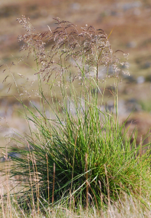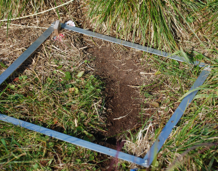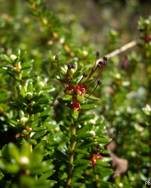Tundra plant communities and herbivores
First and foremost we study interactions between tundra plants and what we see as the most important tundra herbivores: small rodents and reindeer.
With our study designs we explore effects of seasonal and spatial contrasts in the densities of these herbivores.
We are conscious to the importance of the shortcomings of most methods applied, and we are involved in a number of method developments.


silica-rich grasses
in tundra ecosystems?
In the Fennoscandian tundra we observe large areas where vegetation is dominated by silica-rich grasses. We have found reindeer to promote these grasses in tundra grasslands. [link] Build up of silica in grasses has been suggested as a mechanism regulating small rodent population cycles. We tested this [link] but found no corroborating evidence. Now we have developed NIRS for estimating Silica- content effectively [link]



Vegetation effects on small rodent feeding ecology
Small rodents have evident impact on vegetation, but does vegetation have any role in explaining small rodent population cycles? To be able to assess this, a more detailed understanding of the small rodent diets and feeding ecology is needed. We show that the DNA metabarcoding method [link] enables a better understanding of the diet [link].
We find small rodents to have a wider and more diverse diet than assumed before [link], and although they are selective they have a flexible food selection.
HERBIVORES AND
tundra
shrubification
Expansion of tall shrubs has been observed in regions of the circumpolar tundra with climate warming recognized as the main driver. Large regional variation in this expansion, is however not fully understood. Variation in shrub extent and pattern over small spatial scale is linked to patterns of neighbouring vegetation [link], suggesting biotic drivers are important: We find both small rodents and reindeer to affect the recruitment potential of tall Salix shrubs [link].
The responses to herbivory in tall shrub habitats are fast, within three years the community composition changes markedly. [link]
TALL SHRUB TUNDRA

the role of CROWBERRY
in tundra ecosystems
Crowberry is an evergreen dwarf shrub that is almost omnipresent in the Fennoscandian tundra as well as in other circumpolar areas. It is not a palatable plant to herbivores. We find it severely limits both the diversity [link] and growth [link] of co-occurring plants. We also find it to be a predictor for species distributions along with climatic predictors [link].


